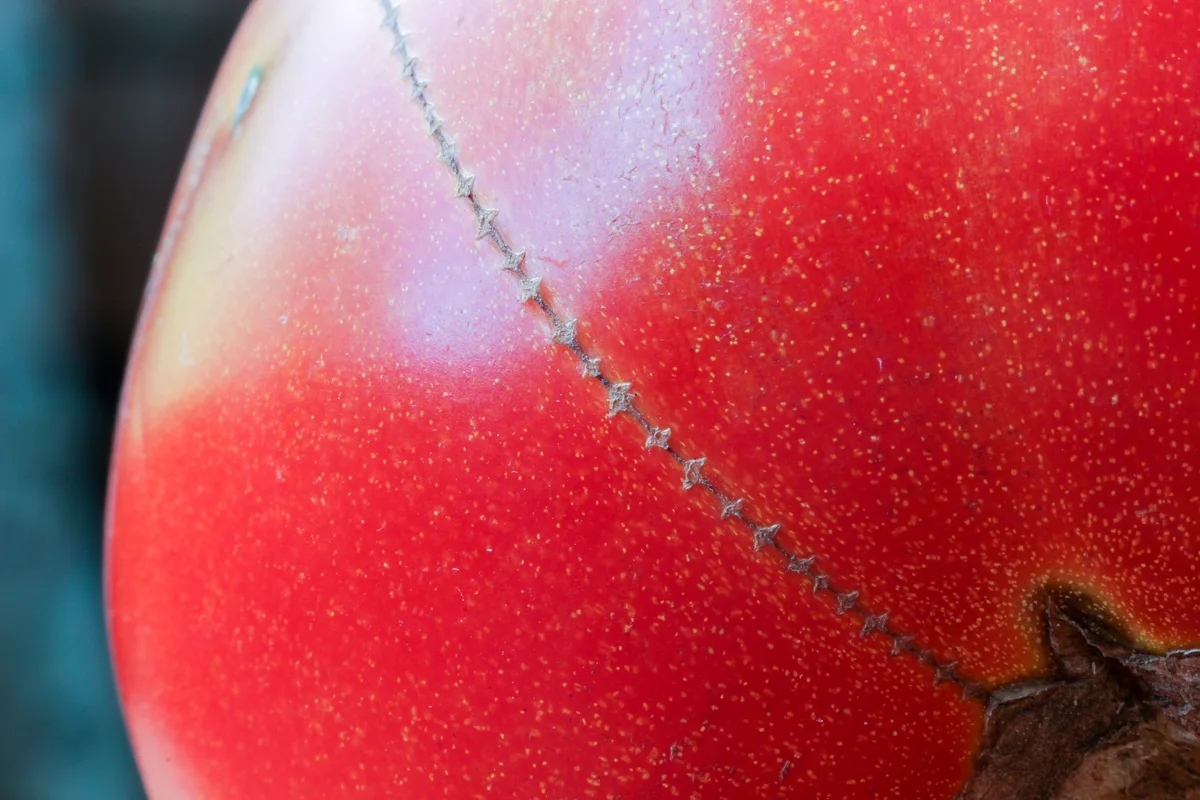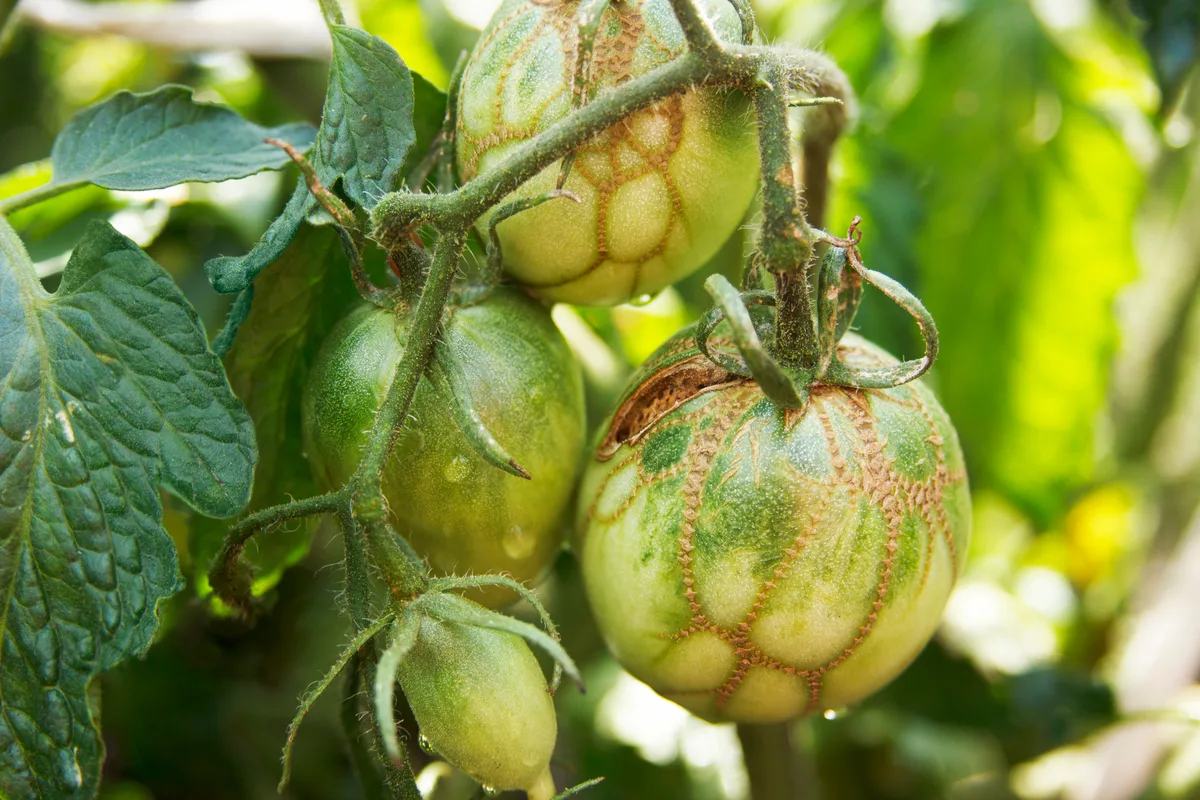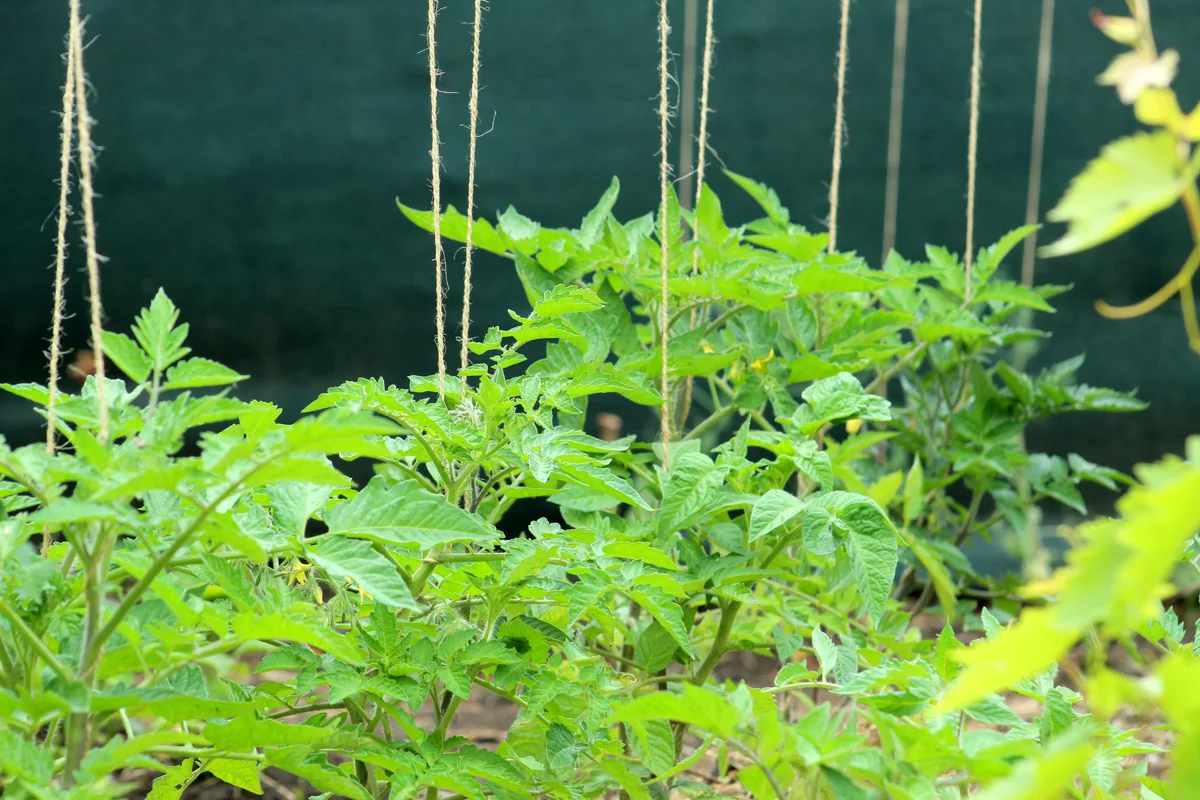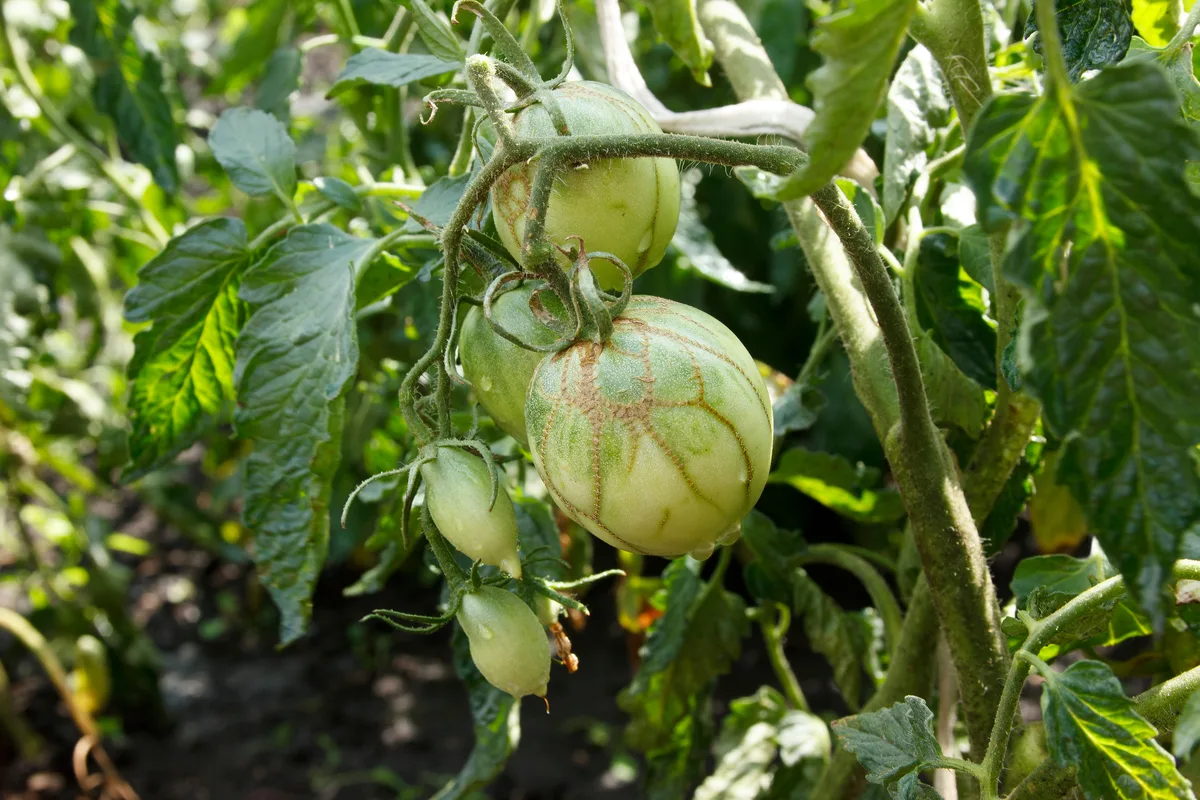
Tomatoes are one of the first plants people reach for to add to their vegetable garden. But, they are also one of the trickiest to grow and manage.
That’s not because they are difficult to grow, in fact the opposite is the case. Rather, it’s because of the many problems tomato plants are prone to from the start of the growing season right to the end.
One of those problems is zippering, an issue you may not have heard of but have almost definitely seen at least once. Although unsightly, this problem is luckily one of the more harmless ones.
Let’s take a look at what causes this common issue and how you can prevent it in the future.
What is Tomato Zippering?

Tomato zippering is not often spoken about, but it is quite common. On the long list of potential tomato problems, it is one of the least damaging or concerning, contributing to its lack of focus.
Zippering is a purely cosmetic problem appearing on the fruits of certain tomato plants. The name says it all – zipper-like lesions appear on the skin of the fruit, ranging in length and depth. If the problem is severe, large holes may develop in the fruits.
In most tomatoes, only one zippered scar appears from the center of the fruit. In some cases, multiple lesions appear but don’t affect the flesh of the fruit underneath. Holes in the fruits can make them more vulnerable to pest and disease problems, but again do not affect the flesh at all. It also won’t affect all fruits on the plant at the same time – only a few.
Symptoms of zippering can look similar to tomato cat-facing or cracking. Fruits may experience these problems along with zippering, but they are distinctly different issues with separate causes and fixes.
What Causes Tomato Zippering?

This problem begins at the start of fruit development, making it difficult to spot until the fruit is fully formed. The anther – the end part of the stamen in the center of the flower – becomes stuck to the side of the small and developing fruits.
As the fruit grows and expands, this extends into a long scar from the center of the fruit in the shape of a zipper. The large holes may develop where the anther was first stuck.
Unfortunately, little is known about why this occurs. But, gardeners have developed a few solid theories to explain why the anther sticks to some fruits in the first place.
The first explanation is high humidity. When there are high levels of moisture in the air, the end of the tomato flower becomes stickier. Tomato zippering therefore becomes likelier as the anther can get stuck to new fruits more easily.
People have also noted this condition happens more often in cooler weather. Variety also plays a role, with some tomatoes more prone to zippering than others. It’s not completely clear why this is the case, but does provide an avenue to prevent the problem.
Are There Ways To Prevent Zippering?
Zippering is difficult to prevent as the exact causes are difficult to pin down. But there are a few things you can try to lessen your risk.
The first is to plant tomato varieties that are less likely to experience this problem. Tomato varieties that can better handle cold weather, such as Celebrity or Glacier, are believed to experience fewer problems with zippering.

For those tomatoes that set fruit at higher temperatures, avoid areas of the garden where cold air settles, especially at night. Protecting your plants during sudden temperature drops around the fruit development stage can also save some of the fruits from damage.
While outdoor humidity isn’t something gardeners can really control, planting in the right area and ensuring airflow around the plant is also believed to help with zippering. Tomatoes do not grow well in high humidity areas anyway as this makes them far more prone to a number of common diseases.

To improve airflow around the plant, ensure spacing between plants is sufficient. Prune suckers often, but don’t prune excessively. Follow our guide here to find out exactly when and home to prune your tomato plants.
What Can You Do If You Find Zippering On Fruits?

Unfortunately, no method of prevention is completely foolproof. Even with all the precautionary measures possible, you may still encounter zippering on some of your tomato fruits. So what should you do with those affected fruits?
Luckily, the answer is simple – eat them!
Zippering is an aesthetic issue not impacting the flavor or texture of the fruit underneath. Zippered fruits certainly don’t look their best, but will taste just as good as all the healthy-looking fruits on the plant.
As zippered tomatoes can be unsightly, a salad or fresh sandwich is probably not the best place for them. Instead, use these tomatoes in cooked sauces or preserves, removing the skin first to get rid of the damaged tissue.
Although zippering is an unpleasant problem to have, it truly is not the end of the world. Continue to eat the fruits and take notes on how to prevent the problem the following season.
